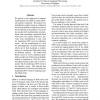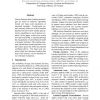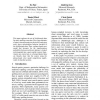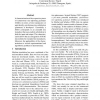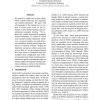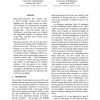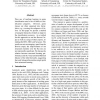ACL
2010
13 years 9 months ago
2010
We present a novel approach to integrate transliteration into Hindi-to-Urdu statistical machine translation. We propose two probabilistic models, based on conditional and joint pr...
ACL
2010
13 years 9 months ago
2010
Current Semantic Role Labeling technologies are based on inductive algorithms trained over large scale repositories of annotated examples. Frame-based systems currently make use o...
ACL
2010
13 years 9 months ago
2010
As information extraction (IE) becomes more central to enterprise applications, rule-based IE engines have become increasingly important. In this paper, we describe SystemT, a rul...
ACL
2010
13 years 9 months ago
2010
This paper explores the use of clickthrough data for query spelling correction. First, large amounts of query-correction pairs are derived by analyzing users' query reformula...
ACL
2010
13 years 9 months ago
2010
A characterization of the expressive power of synchronous tree-adjoining grammars (STAGs) in terms of tree transducers (or equivalently, synchronous tree substitution grammars) is...
ACL
2010
13 years 9 months ago
2010
We present a simple but accurate parser which exploits both large tree fragments and symbol refinement. We parse with all fragments of the training set, in contrast to much recent...
ACL
2010
13 years 9 months ago
2010
Information-extraction (IE) systems seek to distill semantic relations from naturallanguage text, but most systems use supervised learning of relation-specific examples and are th...
ACL
2010
13 years 9 months ago
2010
We present an efficient algorithm for computing the weakest readings of semantically ambiguous sentences. A corpus-based evaluation with a large-scale grammar shows that our algor...
ACL
2010
13 years 9 months ago
2010
This research explores the idea of inducing domain-specific semantic class taggers using only a domain-specific text collection and seed words. The learning process begins by indu...
ACL
2010
13 years 9 months ago
2010
Prior use of machine learning in genre classification used a list of labels as classification categories. However, genre classes are often organised into hierarchies, e.g., coveri...
